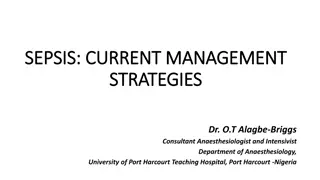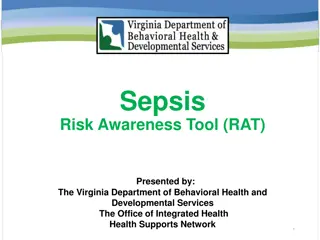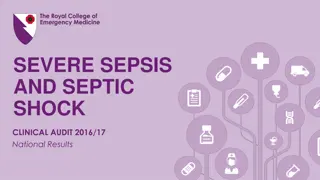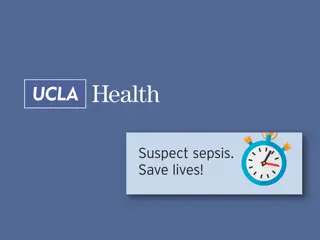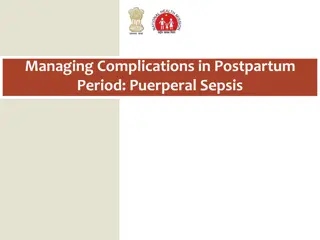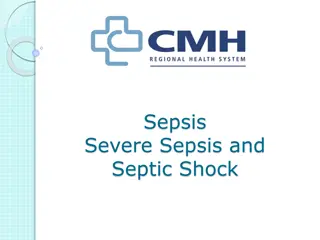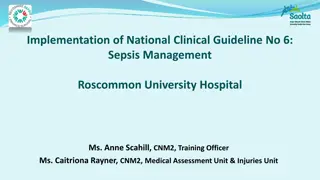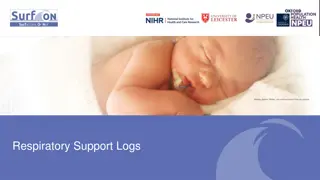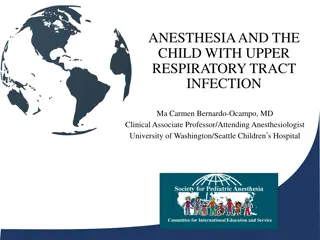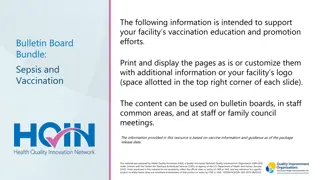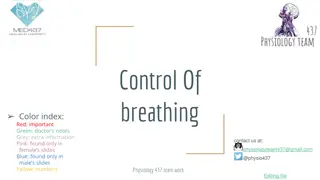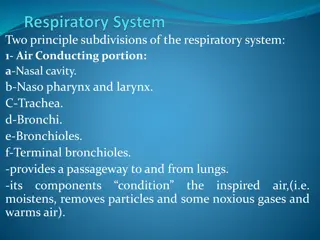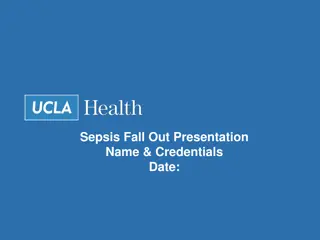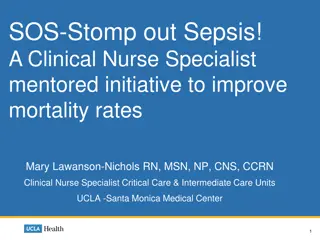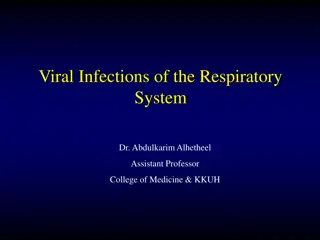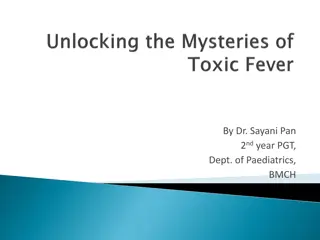Collaborating to Combat Sepsis: Role of Respiratory Therapists
Sepsis is a critical condition involving infection and inflammation, where the body's response causes widespread symptoms. Learn about the continuum of sepsis, its pathophysiology, and respiratory warning signs. Respiratory therapists play a crucial role in identifying and managing sepsis, with statistics showing the significant impact of sepsis on mortality. Collaboration between respiratory therapists and nurses is essential in early detection and intervention to improve patient outcomes.
Download Presentation

Please find below an Image/Link to download the presentation.
The content on the website is provided AS IS for your information and personal use only. It may not be sold, licensed, or shared on other websites without obtaining consent from the author.If you encounter any issues during the download, it is possible that the publisher has removed the file from their server.
You are allowed to download the files provided on this website for personal or commercial use, subject to the condition that they are used lawfully. All files are the property of their respective owners.
The content on the website is provided AS IS for your information and personal use only. It may not be sold, licensed, or shared on other websites without obtaining consent from the author.
E N D
Presentation Transcript
Respiratory Therapists & Sepsis: How we can work together Matthew Dartt RRT-ACCS Mackenzie R. Roesti, RN, MSN, CCRN
What is Sepsis? Sepsis is a complex illness involving both infection and inflammation. Normally, the body s response to an infection is targeted to the site of the infection. With sepsis, the body s response, instead of being localized to the site of infection, causes symptoms to occur throughout the body Sepsis Continuum: SIRS- Systemic Inflammatory Response Syndrome Sepsis Infection PLUS systemic inflammation (SIRS) in response to infection. Severe Sepsis Sepsis complicated by organ dysfunction, hypo-perfusion or hypotension (e.g. altered mental status, oliguria, lactic acidosis) Septic Shock Severe sepsis complicated by persistent arterial hypotension unexplained by other causes, despite adequate fluid resuscitation. 2
Sepsis: A Disease Defining Continuum Sepsis 2 SIRS criteria plus (+) confirmed or suspected infection Severe Sepsis Sepsis plus (+) 1 NEW onset organ dysfunction/failure Septic Shock Severe Sepsis plus (+) Hypotension despite fluid resuscitation of 30mL/kg, &/or Serum lactate levels 36mg/dL (4 mmol/L), and perfusion abnormality 3
Respiratory Warning Signs of Sepsis Within the past 12 hours Increased tachypnea (RR >20) Increased WOB/diaphoresis Patient oxygen requirements increasing to maintain their current status New High Flow Nasal Cannula Increase in PEEP on mechanical ventilator New BiPap/CPAP (not chronic/at home use at night) Intubation These organ dysfunctions can make an RN s sepsis screen POSITIVE! 6
Respiratory Therapists Role There are approximately 1.5 million cases of sepsis every year in the United States with a mortality rate up to 50%. Sepsis Statistics More than 1.5 million people get sepsis each year in the U.S About 250,000 Americans die from sepsis each year One in three patients who die in a hospital have sepsis Lung infection such as pneumonia (35%) Centers for Disease Control and Infection 2017 7
Respiratory Therapists Role Currently Nursing screens patients for Sepsis once a shift, if there is an acute change or if the patient is transferred. Respiratory Therapist can fill the gap: We have patients we see frequently on med surge floors as frequent as every 3 hours. RT s can play a critical role in filling the sepsis assessment gap and bring the attention needed to the patients who screen positive Centers for Disease Control and Infection 2017 8
Respiratory Therapists Role IDENTIFY SIRS Criteria: T >38.3 degrees C (101 degrees F) OR <36 degrees C (96.8 degrees F) HR >90 RR >20 WBC >12,000 OR <4,000 OR >10% Bands COMMUNICATE Notify the patient s nurse and charge nurse Notify them there patient has screened for two signs of SIRS If you have any questions contact your hospital Sepsis RNs Pager 95611 10
Respiratory Therapists Role Notify primary RN Notify charge RN Document notification in flowsheets RN (insert RN name here) notified The Sepsis Screen is under assessment in Flowsheets You can chart on patient vital signs HR > 90, RR > 20 If you have any questions contact your hospital Sepsis RNs Pager 95611 11
Respiratory Therapists Role Under Assessment in the flowsheet EXAMPLES of organ system dysfunction or failure (Organ Dysfunction r/t chronic disease or medication does not apply) Cardiovascular: Systolic BP < 90 OR MAP <65 OR decrease by > 40mmHg from baseline for patient = (+)Septic Shock Respiratory: New need for mechanical ventilation or BiPAP or Highflow Nasal Cannula Renal: Creatinine > 2.0 OR urine output < 0.5mL/kg/hr for 2 hours Hematologic: Platelets < 100,000 OR INR > 1.5 (not on Warfarin) OR aPTT > 60 sec Hepatic: Bilirubin > 2.0 Metabolic: Lactate > 18 mg/dL = (*)Severe Sepsis Lactate greater than or equal to 36 = If you have any questions contact your hospital Sepsis RNs Pager 95611 12
Respiratory Therapists Role Respiratory has a tremendous opportunity to assist in the sepsis screen We are a critical part of the team and help catch treat sepsis early Early goal-directed therapy completed within the first six hours of sepsis recognition significantly decreases in-hospital mortality. Initial management includes respiratory stabilization followed by aggressive fluid resuscitation.GAUER, R. (2013) 13
References Centers for Disease Control and Infection (2017). Sepsis: Data & Reports. CDC. Retrieved from: https://www.cdc.gov/sepsis/datareports/index.html GAUER, R. (2013). Early Recognition and Management of Sepsis in Adults: The First Six Hours. Am Fam Physician. 88(1):44-53.Retreived from http://www.aafp.org/afp/2013/0701/p44.html 14


